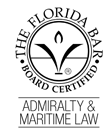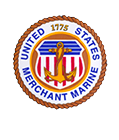Norwegian Epic Trip and Fall Case Allowed to Proceed to Jury Trial
 A Miami Federal Court has found that a Norwegian Epic trip and fall case is allowed to proceed to jury trial after denying NCL’s Motion for Summary Judgment. This case concerns a passenger who tripped and fell over a raised threshold at the entrance of the ladies’ restroom located on Deck 15 aboard the Norwegian Epic cruise ship. From this trip and fall, the passenger hit her head on the restroom wall, lost consciousness and awoke on the floor. She suffered a split lip, black eyes, and severe injuries to her wrist and head. The injured passenger filed a negligence lawsuit against NCL in the United States District Court for the Southern District of Florida claiming that the raised threshold was unreasonably dangerous.
A Miami Federal Court has found that a Norwegian Epic trip and fall case is allowed to proceed to jury trial after denying NCL’s Motion for Summary Judgment. This case concerns a passenger who tripped and fell over a raised threshold at the entrance of the ladies’ restroom located on Deck 15 aboard the Norwegian Epic cruise ship. From this trip and fall, the passenger hit her head on the restroom wall, lost consciousness and awoke on the floor. She suffered a split lip, black eyes, and severe injuries to her wrist and head. The injured passenger filed a negligence lawsuit against NCL in the United States District Court for the Southern District of Florida claiming that the raised threshold was unreasonably dangerous.
Elements of a Cruise Passenger Negligence Claim
In order for an injured cruise passenger to be successful in bringing a negligence claim, it must be shown that the cause of the accident, here the raised threshold, was unreasonably dangerous and that the cruise line knew or should have known of the unreasonably dangerous condition. NCL filed a motion for summary judgement arguing the injured plaintiff did not have enough evidence for a reasonable jury to find that the threshold was unreasonably dangerous or that NCL had notice of the threshold was unreasonably dangerous.
Establishing an Unreasonably Dangerous Condition
In response to the cruise line’s summary judgment motion, the injured passenger presented evidence that the lighting at the entrance of the ladies’ restroom was 50% below the industry minimum recommended standard and the metallic threshold blended with the surrounding floor. Also, the injured passenger showed that the height of the threshold was 3.04 inches which, according to her expert, is more than 600% higher than the maximum height of thresholds permitted by various building codes. Furthermore, the injured passenger presented evidence that there were no warning signs or caution tape outside the door at the time of the incident. Such was enough for the court to determine that a reasonable jury could find that the threshold was unreasonably dangerous.
Establishing Notice of an Unreasonably Dangerous Condition
NCL next argued that it did not have “actual or constructive notice,” of an unreasonably dangerous condition because, “the only evidence the passenger has adduced pertaining to constructive notice is one prior accident.” In response, the passenger argued not only there was a prior trip and fall over the same threshold, but, NCL’s own closed-circuit safety video plays the passengers staterooms as well as the NCL’s daily flyer warned of thresholds throughout the cruise ship. It has been often held by maritime courts that a cruise line cannot claim it does not have notice of a risk creating condition if it warn passengers of such a condition. Based upon this evidentiary record, the court agreed with the injured passenger that NCL was on notice that the threshold presented an unreasonably dangerous condition.
This case highlights the essential elements of a cruise ship personal injury negligence claim and how a passenger can satisfy these elements. Most interesting was the use of NCL own documents and videos to prove the existence of an unreasonably dangerous condition and that the cruise line was aware the threshold posed a hazard to its passengers.












